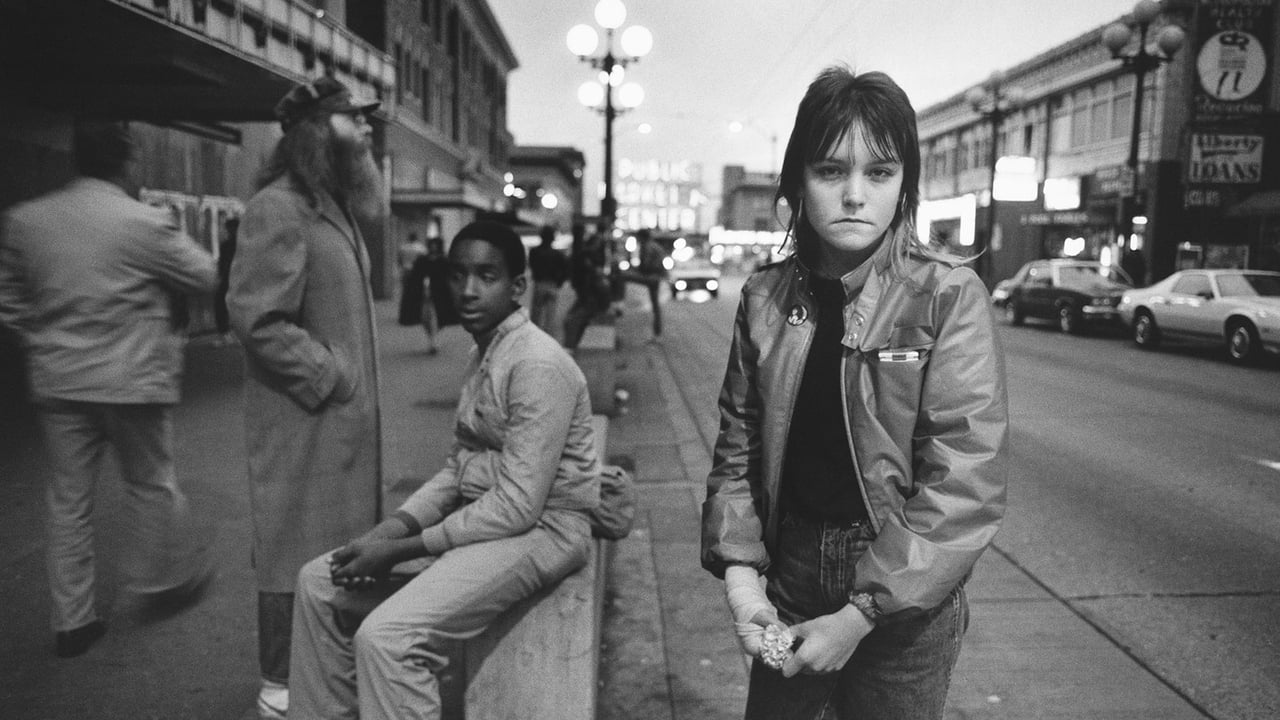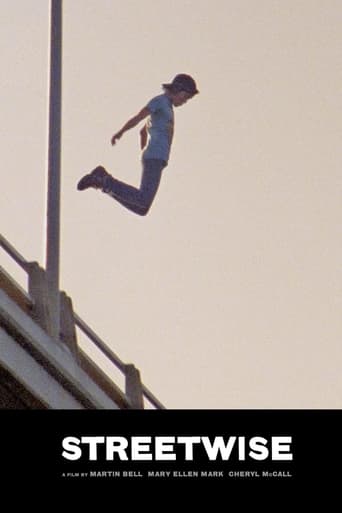TrueJoshNight
Truly Dreadful Film
Lidia Draper
Great example of an old-fashioned, pure-at-heart escapist event movie that doesn't pretend to be anything that it's not and has boat loads of fun being its own ludicrous self.
Sabah Hensley
This is a dark and sometimes deeply uncomfortable drama
Delight
Yes, absolutely, there is fun to be had, as well as many, many things to go boom, all amid an atmospheric urban jungle.
TheDoc Doctor
For the life of a runaway child in 1983 Seattle, it was tough. The kids ruggedly scrambled for their next meal and they did so with intellect. They were street smart. In the film Streetwise, filmmaker Martin Bell inspires to recreate the 1983 Life Magazine article "Street of the Lost," in documentary form. The original article beautifully grasps the struggle and vulnerability of street kids in Seattle but it also captures the childish nature these kids still embody. Bell tactfully captures moments of weakness in these lost children, but he also manages to catch them in moments of care-free living, just as any kid should experience. Bell's goal is not to just capture the reality these kids live in, but to develop an artistic portrait of their multi-faceted adolescence. Bell focuses most of his attention on two kids. Tiny is a complex character. Molested by her step-father at young age and her mother only seeing her current lack of abuse as reason to continue her relationship with the step-father, viewers mildly begin to understand why Tiny has turned to be a 14-year-old prostitute. Rat is a 17-year-old runaway whom spends his nights in an abandoned hotel, salvages for any food he can touch, and works daily shifts begging for money. Bell sees how these tough yet still vulnerable kids encapsulate the majority of kids taking their time to the streets. Though Bell captures the sad circumstances of the two, he dedicates time filming the young childish crushing the two have for each other. Bell sees the importance of sharing the two-dimensional street kid lifestyle; as grinding street dwelling scrappers and as adventurous, imaginative children. Martin Bell, hands over storytelling control to the children by using voice-overs from separately recorded interviews. The voice of the kids (often describing daily routines) are layered over footage of the kids taking on these daily routines. Viewers then receive a full understanding of the action. In one scene Rat describes dumpster diving. He tells the audience that people often question the safety of eating potentially decaying food. But as Rat explains, he always knows what food is safe because he scavenges one dumpster (or as he calls his "reg"). As the voice-over is played, Bell artistically delivers footage of Rat and his friend Jack rummaging through the dumpster, selecting their next meal. This technique of layering voice-over and footage makes it easy for the viewer to understand how these kids survive on a daily basis. Martin Bell, along with his ability to match visuals and sound, has an alluring ability to alter the distance between the audience's connection with the most intimate factors in these kids lives. Late in the film Rat goes to visit Tiny after she has been arrested. Rat has intentions of leaving the city but Tiny is trying to convince him to wait for her to get out of holding. It is an emotional scene where Bell shifts back and forth between close-ups of Tiny and Rat. Bell highlights the child-like romance these two have through close-ups of their facial expressions, amplifying the emotion. The scene then cuts to a long shot Rat looking outward to a passing boat. Rat wants to get out of Seattle. He looks back abruptly before the scene cuts again to him hopping on a passing train. Does this mean Rat is trapped in Seattle as he is too young to find the way out of the city? Could it be that the train only takes him through the city, not out of it? Martin Bell seemingly uses a variety of camera shots to give us a microscopic look into their emotions and also their environmental standing which keeps them in touch with these emotions. Streetwise is a brilliantly directed film that has plenty of nuances to make it a distinct documentary. It is not often that a filmmaker will let the subject do all the talking, but because the kids get so much attention we are constantly reminded of their conditions. With the help of some grade A filmmaking the stories become far too real, and so beautifully powerful.
finallyhomerescue
If any one watched the movie & actually understood it they might understand the absurdity of that statement. When these weird people showed up & started following us around most just wanted to jump them & take their cameras & other stuff but none of us knew anyone who would buy something like that. We were on the streets for a reason & most of us had not had very good luck with adults so it was not really in our best interest to deal with them, but these folks were smart, somehow they got in good with Lulu one day Lulu told us hands off the old people, don't mess with them. So that was the way it was, after them being around for a while some of us kind of talked to them, most of us just wanted them to go away, they were strange, they didn't want sex, they weren't trying to hit or hurt us & most of us just got used to them. A lot of the others that were in the movie were trying to stay alive in some small way, the green river killer was working the crowd & that movie might be the only proof we were ever even here. Some of the kids were just trying to prove that they were making it & doing fine without their parents. D's dad was a dipstick & that is always how he talked to him. Somewhere it says that Lulu's last words were to tell these people that she was dead, that is BS, she was NOT attacked by other streetkids for no reason, she was defending her girlfriend from a drunk insane man, that is the way it was, that is the way she was. None of us got paid for this, as a matter of fact I don't even think any of us could con those folks into buying us a burger & fries at the Unique. For all of the armchair critics here who didn't have to live like this, or wasn't there, you might want to get out more. For any of those reading who may be still alive from there this is Breezy RIP Patti, Lulu, Dewaynne, John, & Bert...
udar55
I first saw this Academy Award nominated documentary when I was 11 or 12 years old and I can't think of what possessed me to want to see it. Director Martin Bell profiles several homeless kids in the Seattle area. This is pretty powerful stuff even today. Semi-main character Dewayne is a very compelling story and it is still shocks me when it is revealed he is 16 (he looks 12). Bell parlayed the father/son relationship of Dewayne seen here into the feature American HEART with Jeff Bridges and Edward Furlong. I would love to see a follow-up on the kids today (kinda like how they did SCARED STRAIGHT: 20 YEARS LATER). Wikipedia offers some insight into their current lives and it is cause for some hope. Most grew up to create normal lives although some passed away (including a featured teen who ended up being a victim of Gary Ridgeway, the Green River Killer).
LoLo
I have followed (or tried to follow) Tiny through the years, she is up to 9 children now and is moving to North Carolina with her husband. He is the father of her last 4 kids. Her oldest son Daylon lives alone and is 19, her 2 oldest daughters live with a relative. Here is the link to http://seattletimes.nwsource.comtype in Mary Ellen Mark, the article is called: Focused on a life: Photographer uses camera as force for changeI heard that Rat is living on a farm or ranch, , some people say he died, does anyone have any current info?Does anyone have a picture of Roberta, the victim of the Green River killer? I cannot remember her face.

